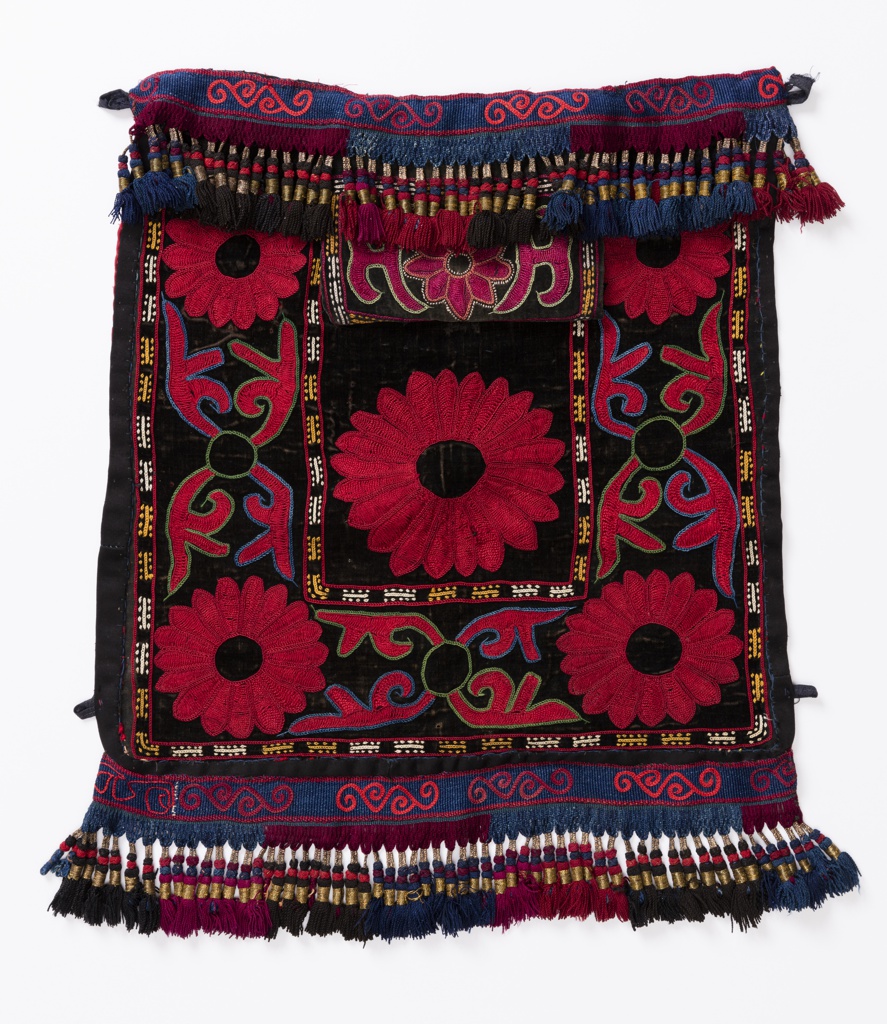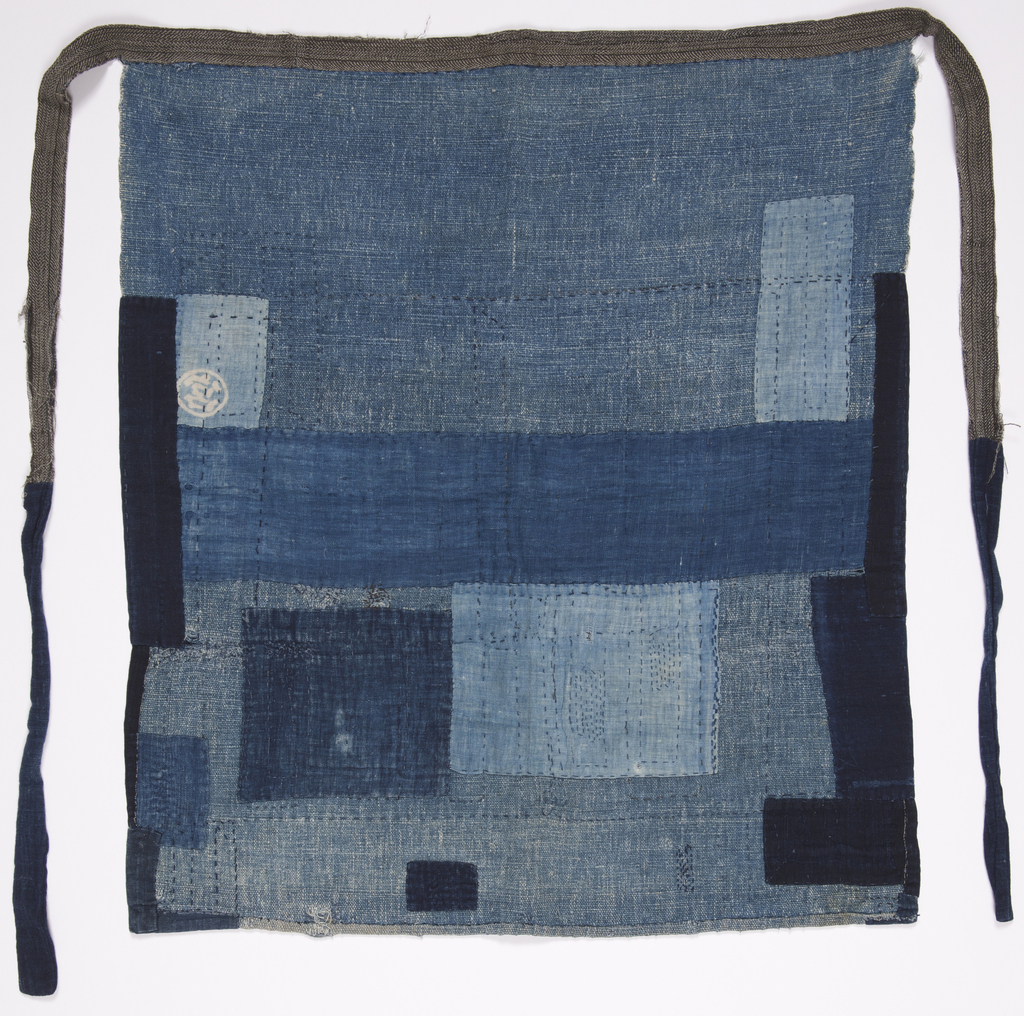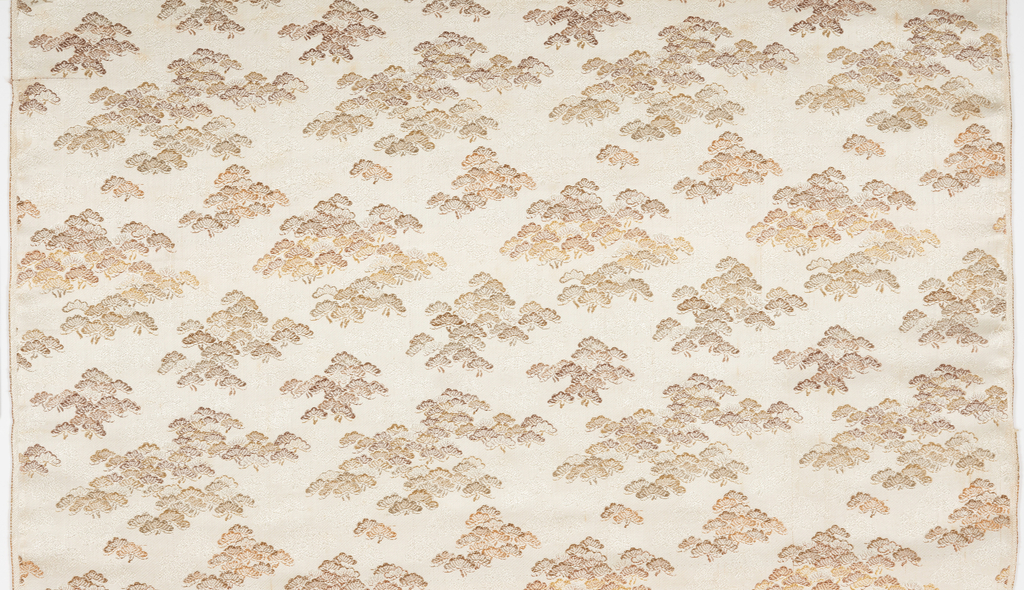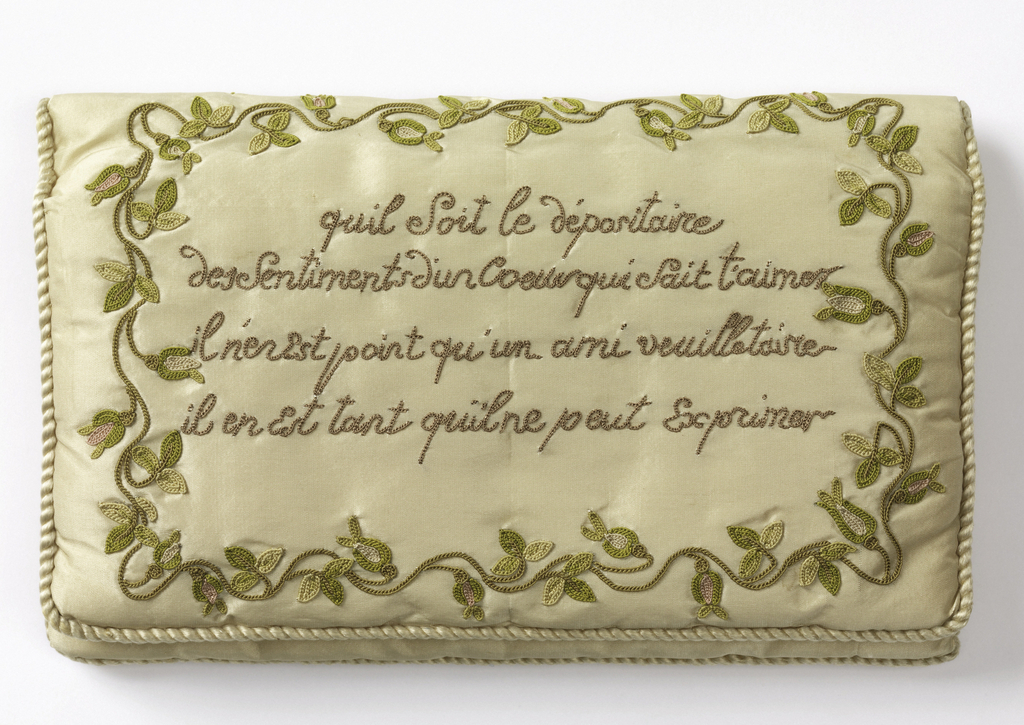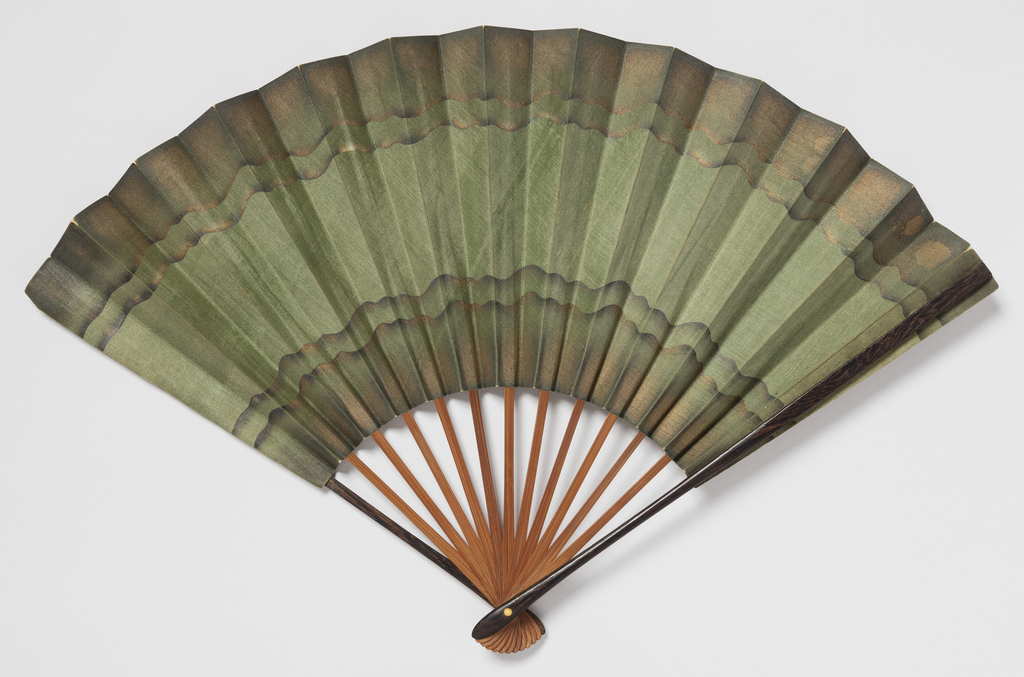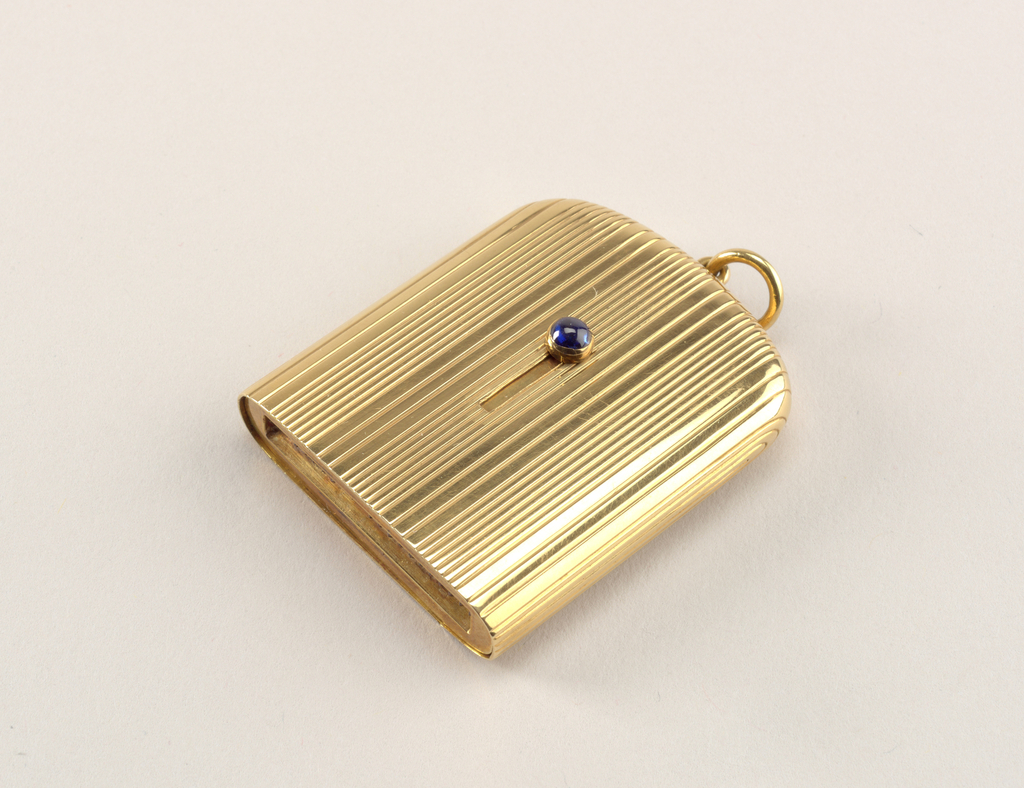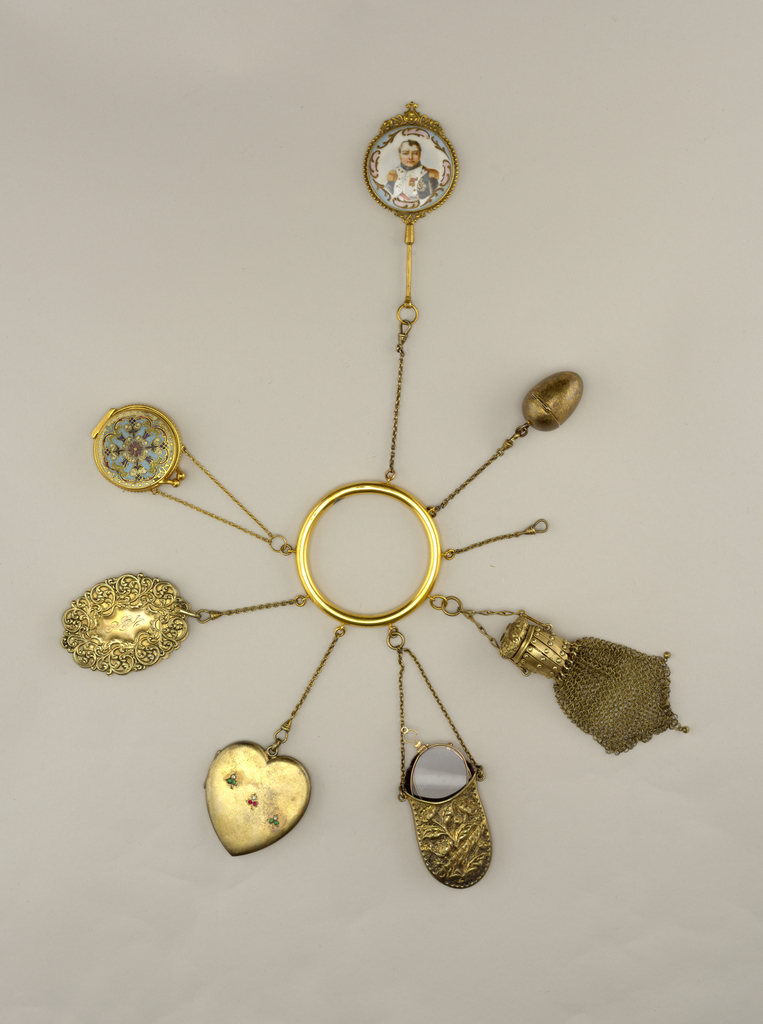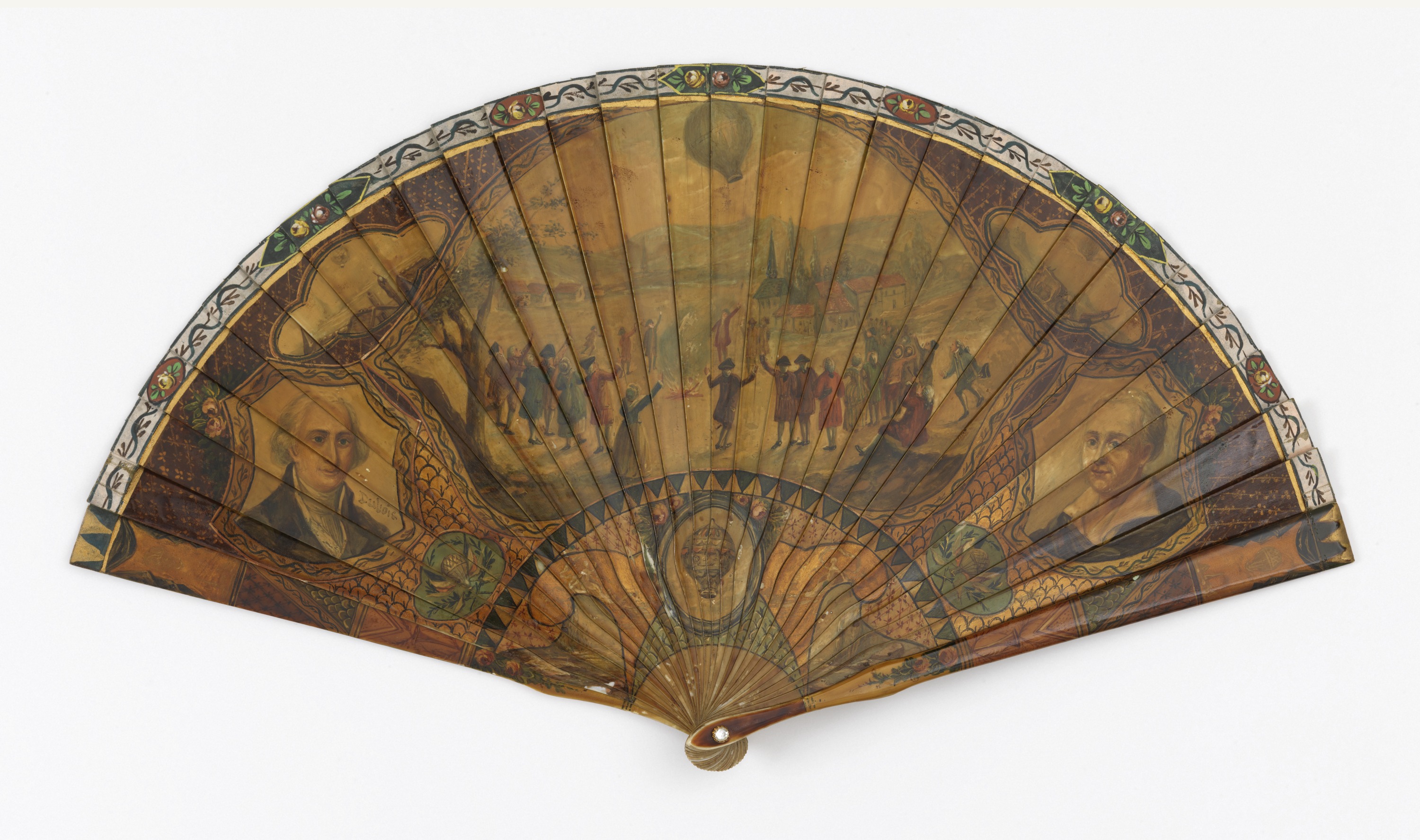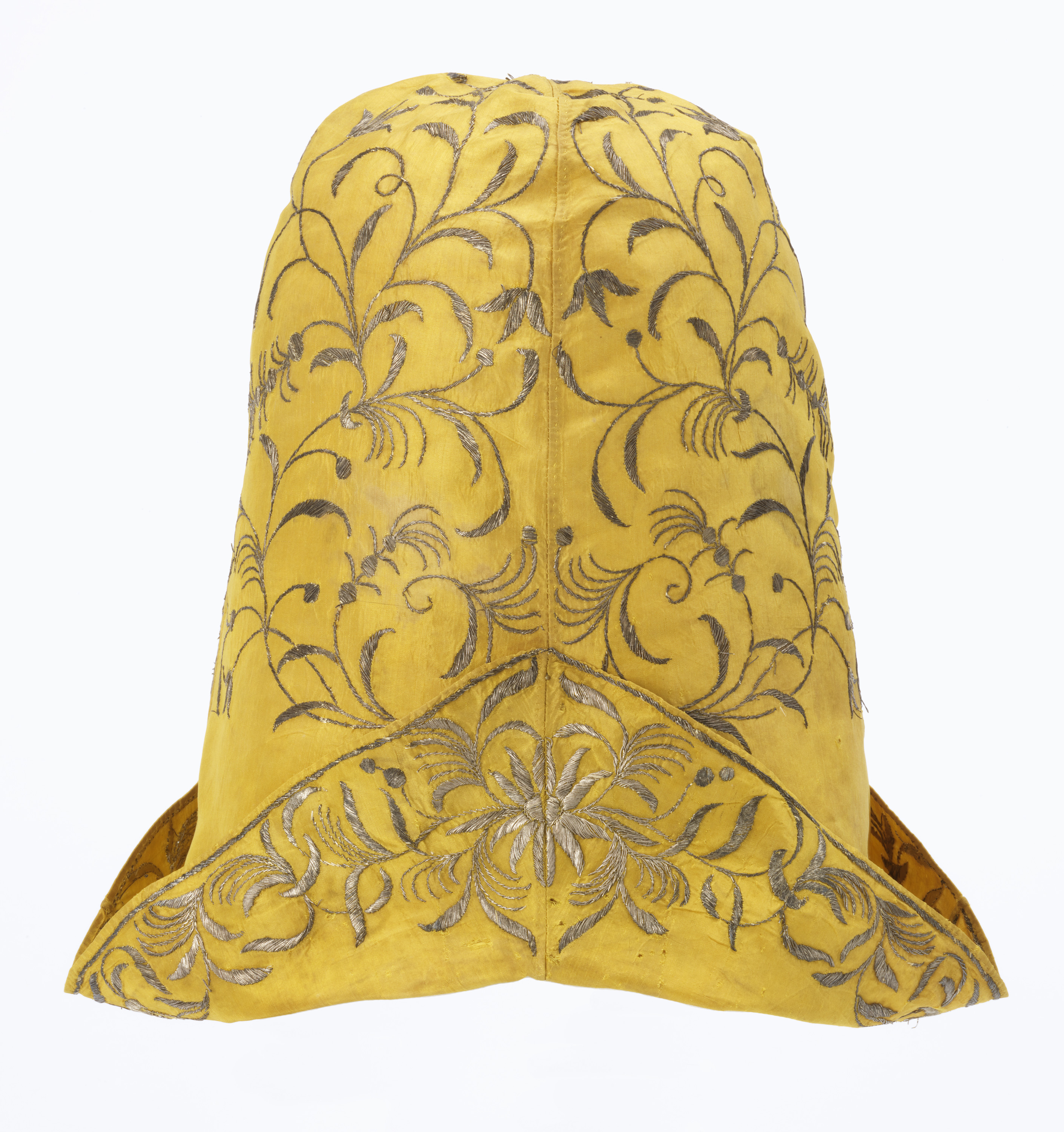In Kyrgyzstan, the nomadic past is evident in the quantity of collapsible, portable textile furnishings. Textile objects found in Kyrgyz homes include patchwork, embroidered, or appliquéd quilts, saddle bags, pot holders, rugs, clothing, room dividers, and in the case of yurts, tent flaps. These garments and housewares are often made as part of a bride’s...
In pre-industrial Japan, aprons were a basic element of everyday dress, worn by children and adults to protect one’s clothing, which was infrequently cleaned. Some form of apron was worn by workers of all sorts, from shop-keeping to field work to fishing. Like other work clothes, aprons were often made of repurposed cloth, as this...
This Japanese fabric was produced for a maru obi, the most formal of obi for women. Maru obi cloth is typically woven in widths of twenty-five to twenty-six inches—about double the width of more casual styles of obi. The cloth is folded around a stiff lining and stitched together along the selvedges. It is bulky,...
Author: Laura L. Camerlengo September is New York Textile Month! In celebration, members of the Textile Society of America will author Object of the Day for the month. A non-profit professional organization of scholars, educators, and artists in the field of textiles, TSA provides an international forum for the exchange and dissemination of information about...
This elegant fan appears to be from the Meiji, or late Edo (mid-19th century) era, although its high quality sets it apart from standard export wares. It is meticulously crafted, with a subtle hand-painted leaf. Unusual for a Japanese folding fan, the front leaf is constructed of very finely plain-woven silk adhered to a paper...
The development of friction matches in the early nineteenth century was a major discovery as it allowed for instantaneous and reliable fire on demand for the first time in history. The design of matchsafes arose as the early friction matches were both highly combustible and unstable. These decorative boxes allowed bulk matches to be protected...
The Cooper Hewitt’s American Chatelaine (ca. 1860) may seem like a completely foreign object at first glance but upon further study, it is more familiar than it might seem. If we look at the history of chatelaines we see that they are part of an archetype of tools to carry on one’s person that is...
This fan commemorates the Montgolfier brothers Joseph-Michel Montgolfier (left, 1740-1810) and Jacques-Étienne Montgolfier (right, 1745-1799), inventors the globe aérostatique (hot air balloon). The central scene shows the brothers’ first public experiment, which took place in Annonay, France on June 4th, 1783 in front of a group of state representatives. That day, a balloon inflated with...
This 18th-century hat is called a nightcap, but it probably was not worn to bed. A man would use this cap to keep his head warm when he removed his wig, since a wig required short hair or a shaved head. A wig was proper attire for men of almost any status in 18th century...
